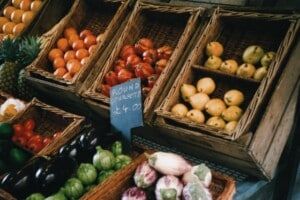8 Tips on Growing a Successful Fruit and Vegetable Store

If you’re passionate about produce, then starting a fruit and vegetable store may be the perfect business venture for you! However, it’s important to remember that there are many things to consider before opening up a shop. This blog post will discuss 8 tips that will help your fruit and vegetable store thrive!
Tip 1: Do your research
Before opening a fruit and vegetable store, it’s important to do your research and understand the industry. What are the trends? What do customers want? By understanding the market, you’ll be able to better cater to your target audience.
Tip 2: Finances
Of course, one of the most important aspects of starting a business is having the finances in order. Make sure you have a solid business plan and know how much money you’ll need to get started. Make use of a credit card [credit card processing] for retail stores to help with start-up costs and inventory.
Tip 3: Location
The location of your fruit and vegetable store is extremely important. You want to make sure you’re in a high foot traffic area so that customers can easily find you. Additionally, being near other businesses can also help draw people in.
Tip 4: Product Selection
When it comes to stocking your shelves, it’s important to offer a wide selection of products. Customers should be able to find everything they need at your store. If you specialize in organic produce, make sure to offer
Tip 5: Make your business more sustainable
There are a few things you can do to make your fruit and vegetable store more sustainable . One is to source your produce from local farmers. This not only helps support the local economy but it also reduces your carbon footprint. Additionally, you can compost any food waste and use recycled packaging materials.
Tip 6: Promotions and marketing
It’s important to promot e your business so that potential customers are aware of your store. There are many ways to market a business, such as through social media , online directories, or even by holding in-store events. By getting creative with your marketing, you’ll be able to attract new customers.
Tip 7: Customer service
Providing excellent customer service is one of the most important aspects of running a successful business. Make sure your employees are friendly and helpful and that they go above and beyond to assist customers. Additionally, you should make it easy for customers to get in touch with you if they have any questions or concerns.
Tip: 8: Develop a loyalty program
Loyalty programs are a great way to encourage customers to keep coming back. By offering discounts or special rewards, you’ll be able to show your appreciation for their business. Additionally, this can help you build long-term relationships with customers.
By following these tips, you’ll be on your way to growing a successful fruit and vegetable store! Just remember always to put your customers first and strive to provide them with the best possible experience. With hard work and dedication, you’ll be sure to succeed!


